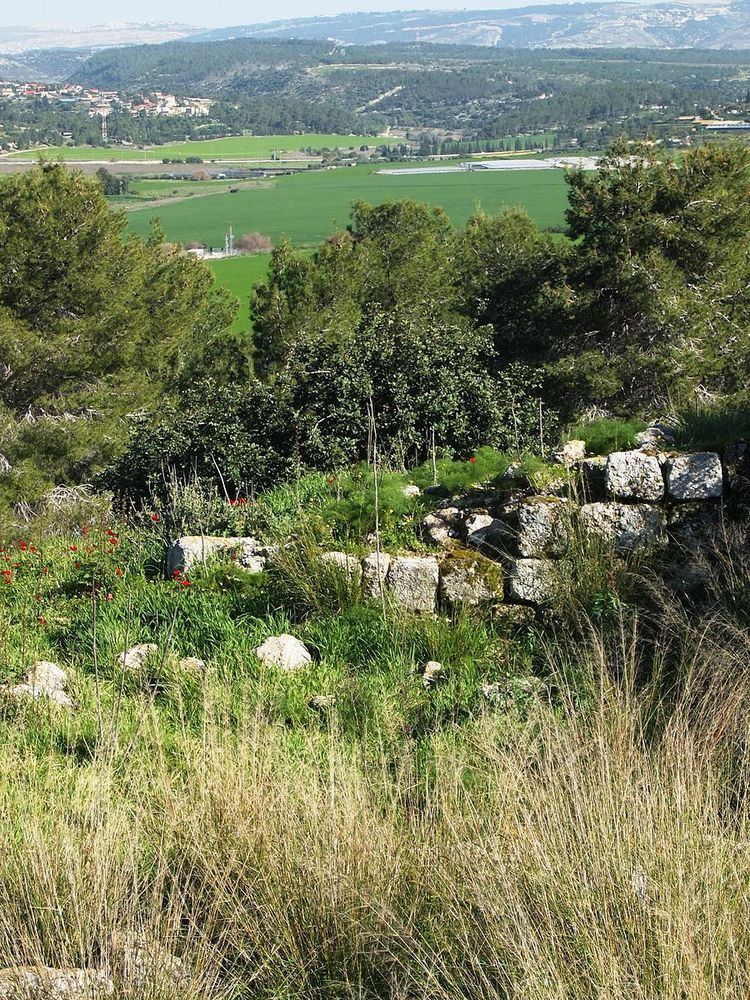 | ||
Sokho, alternate spellings: Sokhoh, Sochoh, Soco, Sokoh, Hebrew: שוכה ,שוכו ,שכה, is the name given to two ancient towns in the territorial domain of Judah, the remains of both having been identified.
Contents
Both towns were given the name Shuweikah in Arabic. One is located to the south of Hebron and has been identified with the twin ruins known as Khirbet Shuwaikah Fauka and Tahta (Upper and Lower Shuwaikah), 6 km southwest of Eshtamoa in the Hebron Hills district (Joshua 15:48). The other ruin is the more popular of the two, situated on a hilltop overlooking the Elah Valley between Adullam and Azekah (Joshua 15:35). It was visited by Claude Conder in 1881, who writes that it was already a ruin in his days, with two wells in the valley towards the west. A third town by this name, Shuwaykah, was located in the Hefer region (1 Kings 4:10), north of Tulkarm.
Socoh in the Hebron Hills
See above.
Socoh in the Valley of Elah (Givat HaTurmusim)
The hill of Tel Sokho is now known as "Givat HaTurmosim," or "Hill of the Lupines." In late March, the entire hill is covered with wild blue Mountain lupines (Lupinus pilosus) and becomes a popular outing destination for Israeli families. The hill is surrounded by precipitous slopes on its north side, making it almost impassable. Trails ascend the mountain on its northwestern side and southeastern sides. The Elah Valley runs in a westerly-easterly direction on its north side, the hilltop affording a good view of the valley below. On the elevated plateau, one can see the foundations of ancient dwellings carved into the bedrock with individual chambers divided by broken stone protuberances. Caves and grottos dot the landscape, and cisterns are carved deep into the rock. Oak trees, fig trees and terebinths grow on the mountainside and piles of large ashlar boulders, covered with lichen, attest to the presence of a defensive wall around the city in antiquity. According to the biblical narrative, when Joshua captured the city from the Canaanites, the city and environs became the inheritance of Judah.
Archaeology
Excavations at the foot of the northern slope exposed a Byzantine building from the fifth–sixth centuries. Remains from Iron Age II were uncovered in another dig at the foot of the northern slope, and walls dating to the Middle Bronze Age were discovered in probe trenches. Potsherds dating to the Late Bronze Age and later periods were gathered, along with a terracotta figurine of reddish brown clay depicting a naked woman.
